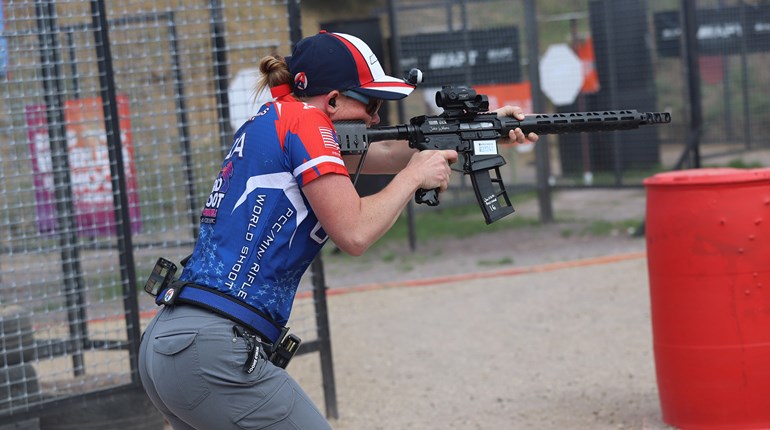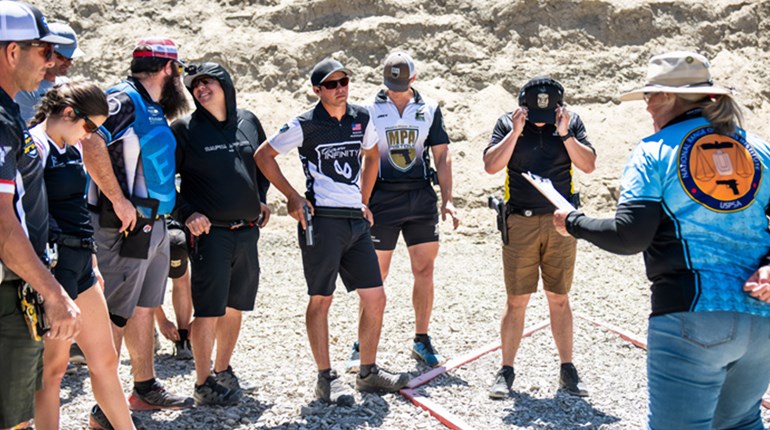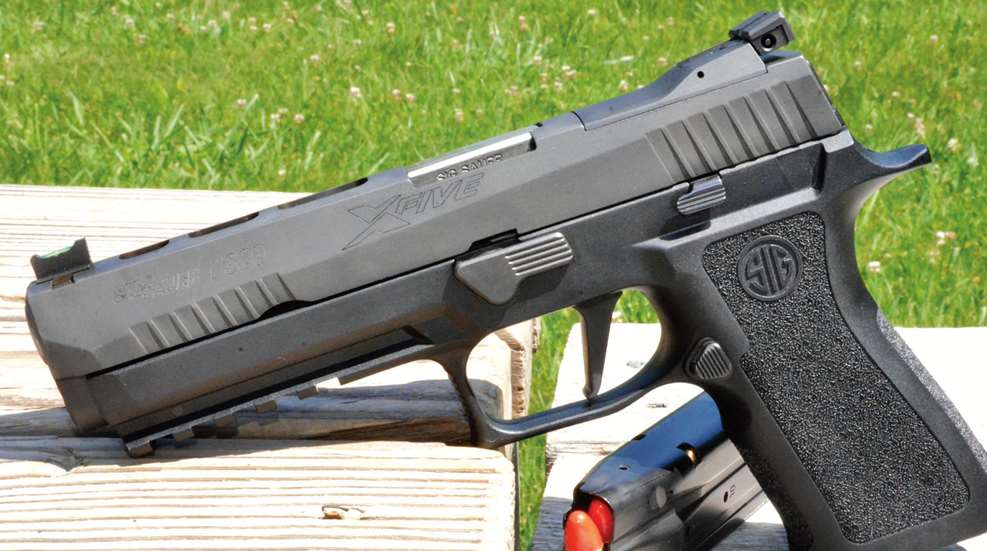
When the SIG Sauer P320 X5 (MSRP: $1,005; www.sigsauer.com) first arrived for review, I discovered that four high capacity magazines were included. Sending enough magazines with the gun so that the new gun owner is geared up ready to go is a refreshing idea that has never really caught on in the gun world; kudos to SIG on this note! The X5 magazines hold 21 rounds, and I discovered that they are reloadable with 21 rounds.
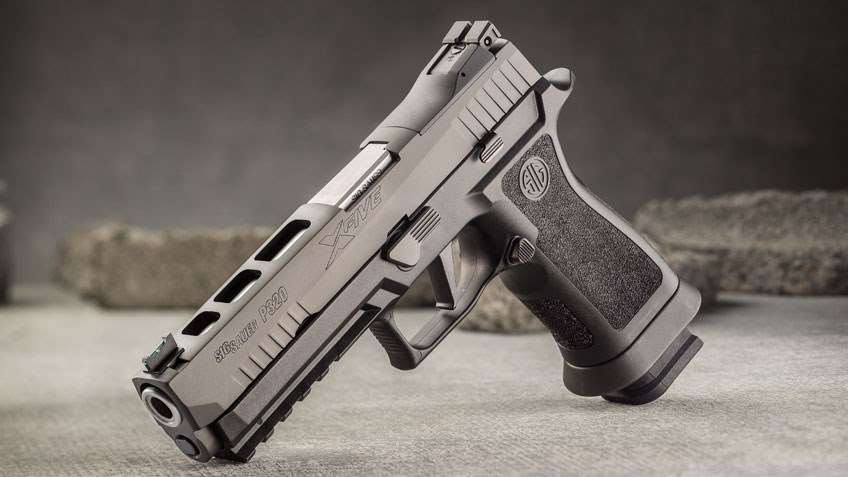
Editor’s note: Watch this video of American Rifleman Editor-in-Chief Mark Keefe with SIG’s Pistol Product Manager Phil Strader shooting the P320 X5.
The gun
This is a large gun. Even in the box, the gun loomed large, and it filled the hand comfortably. The narrow green fiber-optic front sight and the magazine well were the next features that grabbed attention. The gun feels very well balanced in the hand. My first impression was that this gun was well thought out—designed with the competition world in mind.
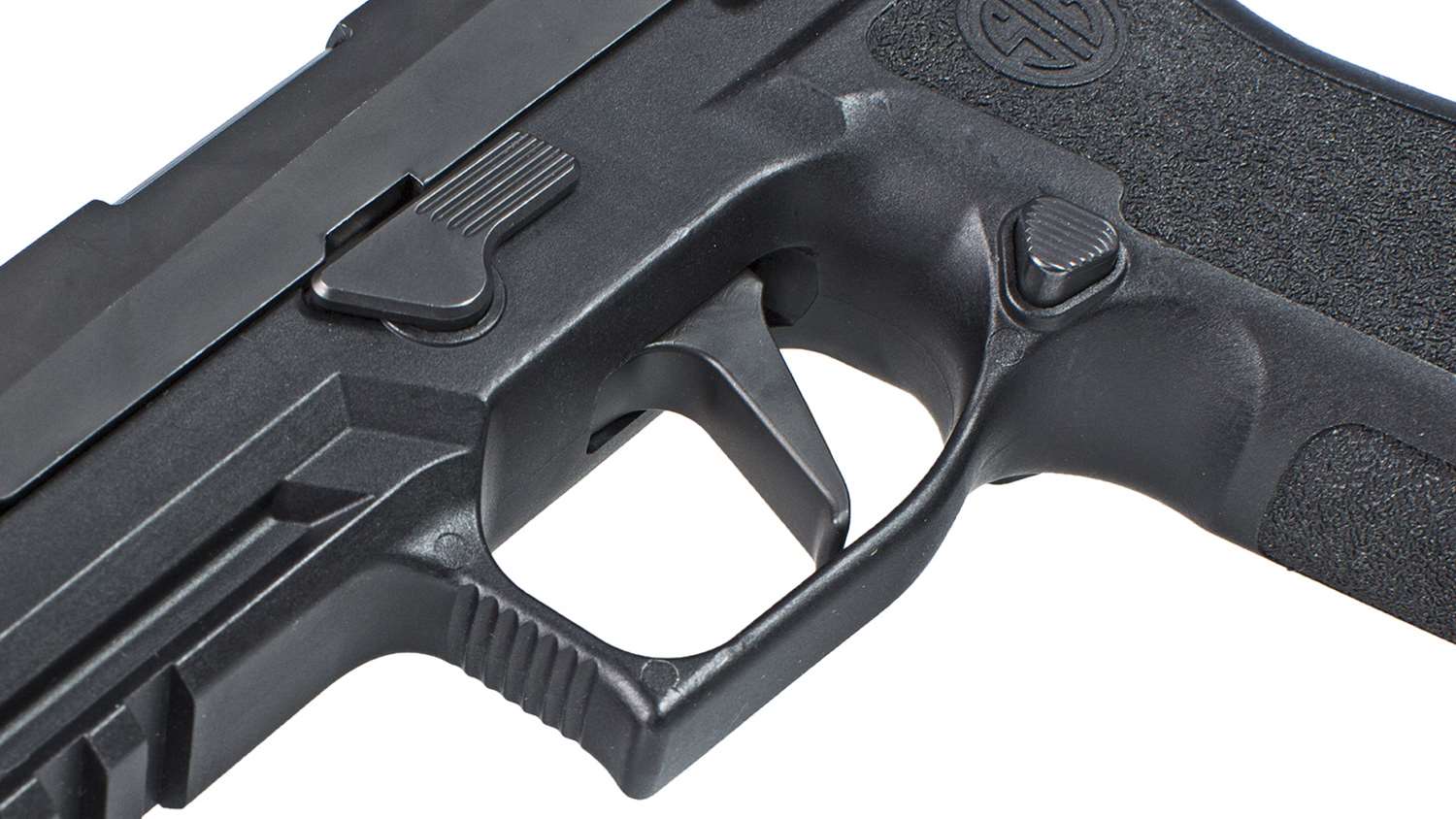
The frame of the pistol is modular polymer and includes a rail for mounting lights or lasers if desired. The grip contains a fine grit texture on all four sides; it is undercut at the base of the trigger guard to facilitate establishing a proper grip on the gun. There is no mechanical safety on this gun, which is fine in the competition world. The slide release is ambidextrous, and the magazine release is triangular in shape to enhance the cool factor of the gun.
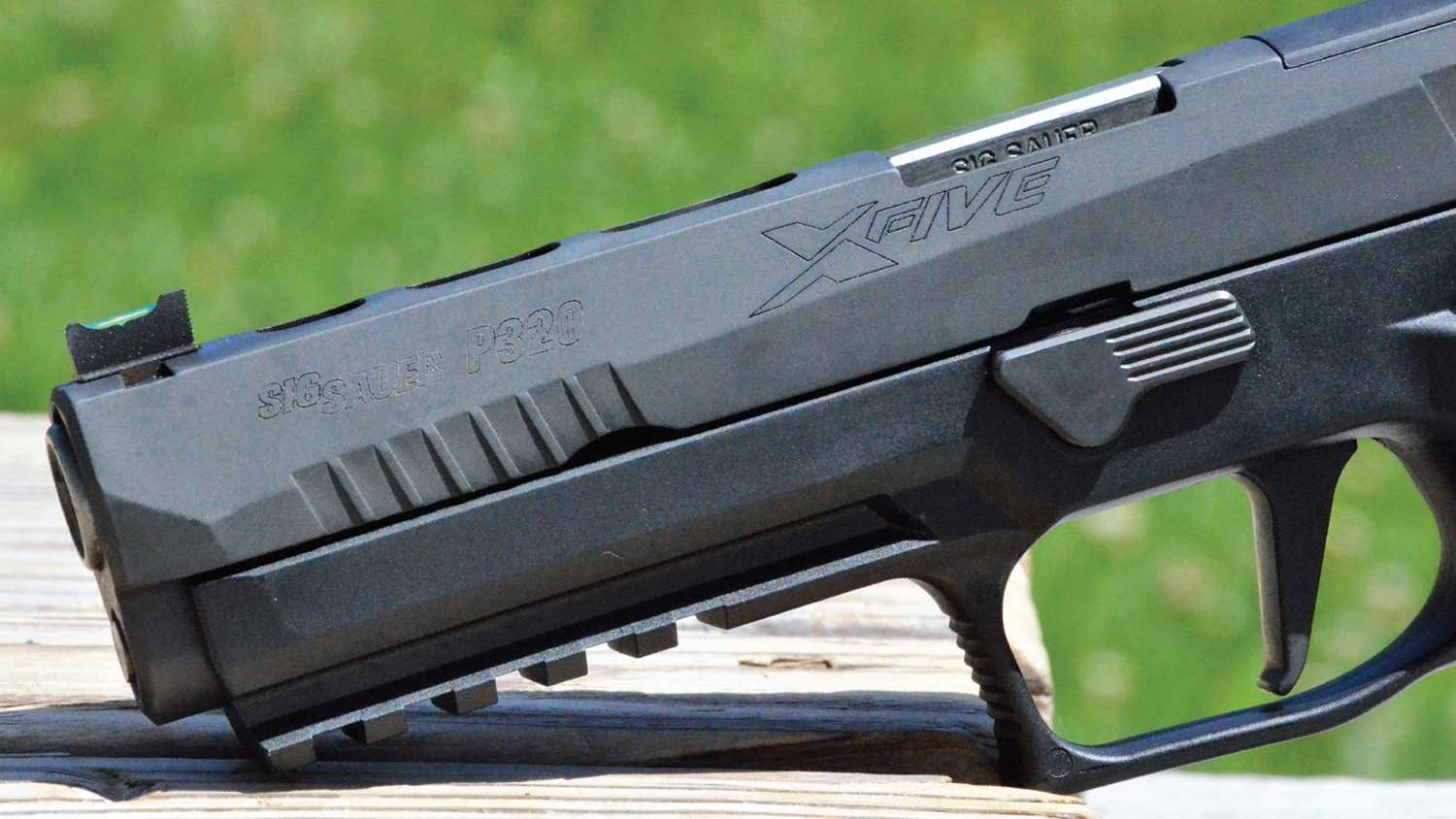
The slide is lightened by three large ports in the top of the slide, and includes front cocking serrations. The sights are Dawson Precision; the front sight is very narrow, and the standard fiber optic is easy to track while shooting. The rear sight is adjustable for both elevation and windage.
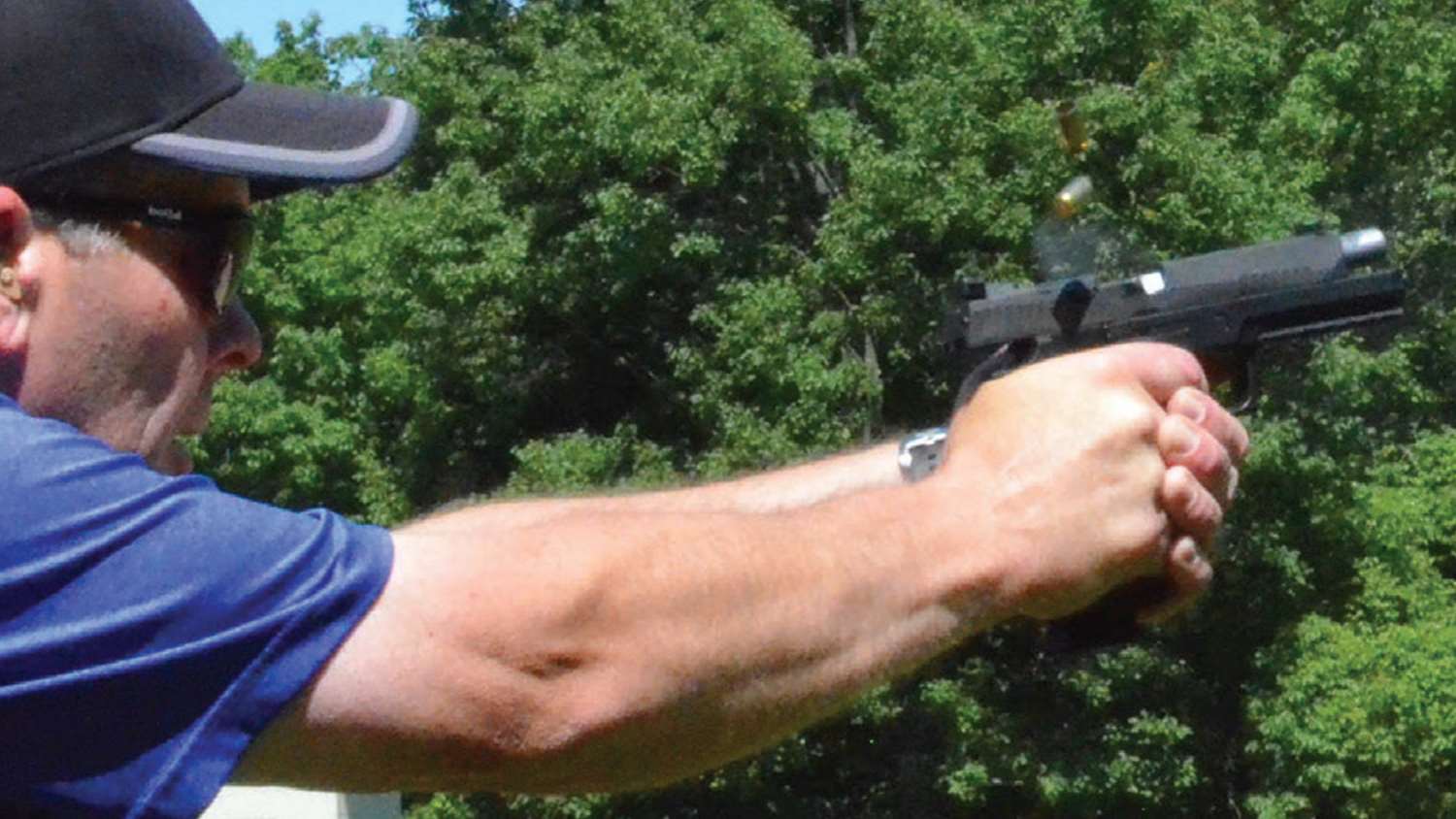
The trigger has a short amount of take-up and breaks cleanly. There is a bit of stacking on the trigger right before it breaks. If you are shooting drills or in a match it’s not noticeable or problematic, but if you are taking your time and pressing slowly in dry fire, it is noticeable. The trigger is good enough to compete out of the box. The X5 also has a removable plate for mounting the SIG Romeo optic for Carry Optics. The X5 comes with a magwell that comes off with a single screw. This gun is well thought out, and comes standard with many of the features that normally have to be added to a gun from the factory.
Drills at the range
The first action on the range with the X5 was at the Riley Conservation Club near Terra Haute, IN. My son and I decided to see what the X5 was like. After five or six misses on a steel plate at 20 yards, it was time to adjust the sights. The sights were low, but easy to adjust and once that was accomplished the results were much better. The gun ran without malfunction right out of the box throughout the session. The plate rack was given a workout from about 20 yards. Good hits were the norm.
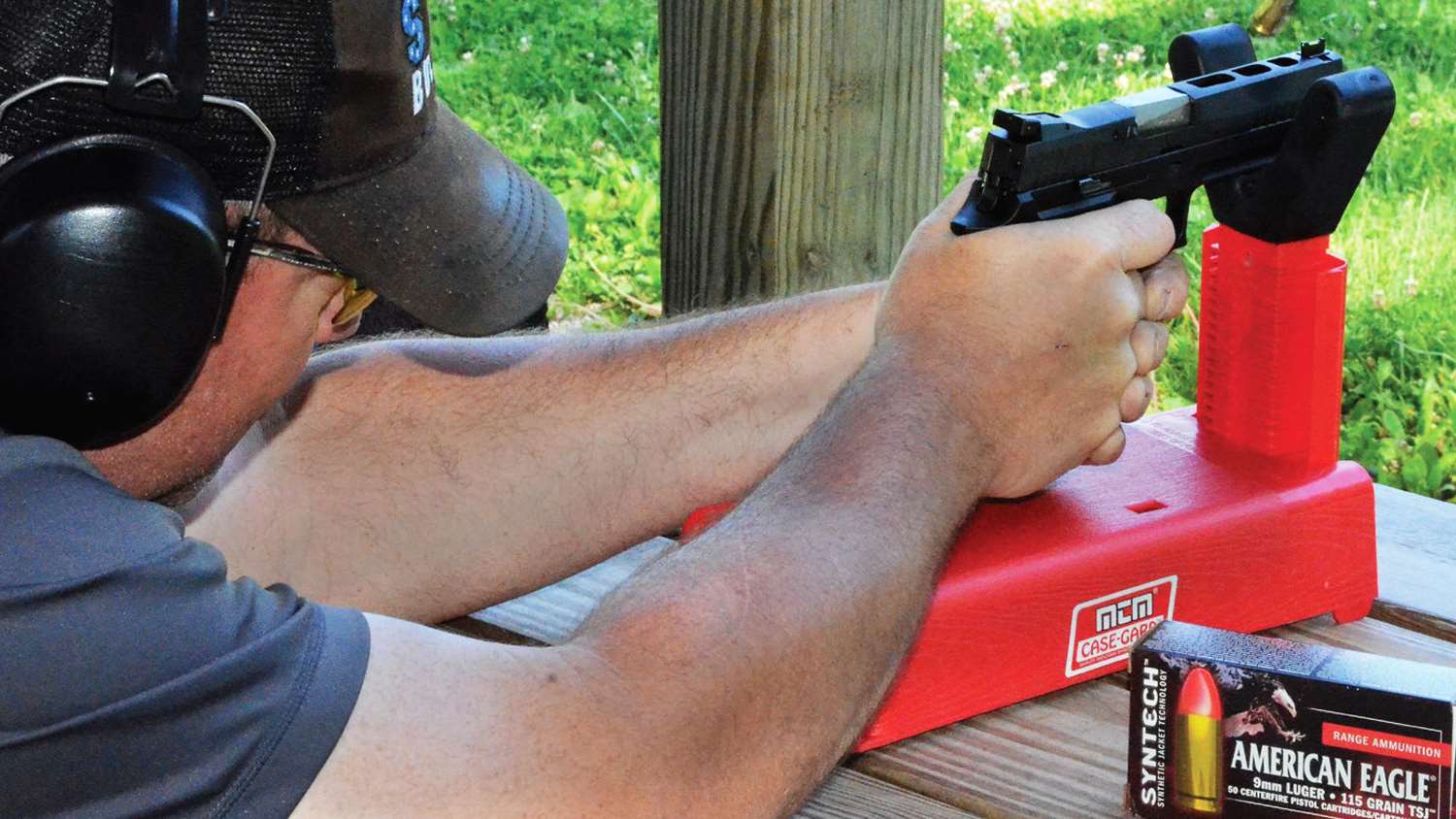
We then adjourned to another bay and shot both pepper poppers and paper targets. The steel was 18 yards away, and the paper varied from nine to 22 yards, spread out to allow for both difficult and easy transitions. I was using a holster from the lost-and-found box. The holster was made by SIG, but not what one would call a serious competition holster. I had no issues drawing and firing the gun, and getting hits on either the steel or paper. The feel was different than my Limited gun but the shooting went just fine.
My son is 10 years old and weighs about 70 pounds; he handled the recoil from the gun fine and was able to shoot some good 10-shot groups on the paper targets. He did not mind shooting the gun and shot several strings. This large-frame pistol soaked up the recoil drastically. Several Bill Drills were shot at the close of this first session, and my times were very much in line with my Bill Drill times with every other gun I normally shoot. No malfunctions were endured throughout the evening.
We also took the gun to the Cloverdale Conservation Club in Cloverdale, IN, shooting it through a variety of drills to simulate the type of things the gun would be asked to do in the competition world. We were still using the holster from the lost-and-found box. (If it’s your holster, it is already back in the box, and thanks for the loan.) This holster is not the type a serious competitor would use, so keep that in mind in judging the numbers below. We were shooting at new steel plates shaped like Metric targets but only the Alpha and Charlie zones visible.
We each did a set of draws on a single target at 10 yards. My times ranged from the first one at 1.21 seconds down to the fastest time of 1.03 seconds. Jake ranged from a first shot of 1.49 seconds to a fast time of 1.17. The grip was easy to establish in the holster to bring the gun to eye level and pick up the sights for a quick shot. The large grip filled the hands very nicely, and the weight of the gun made recoil very manageable.
The next set of drills required reloading on the clock. We shot an array of targets at 10 yards with two rounds each, performed a reload and re-engaged the targets with two rounds each. We started facing the targets. Jake ran the drill three times, with times of 6.08, 6.05 and 5.96 seconds respectively. I ran the drill in 6.54, 6.23 and 7.03 seconds. Neither of us had any trouble with the reloads during this drill or any other drill during the session. We both felt that the magazine well was really nice and did its job.
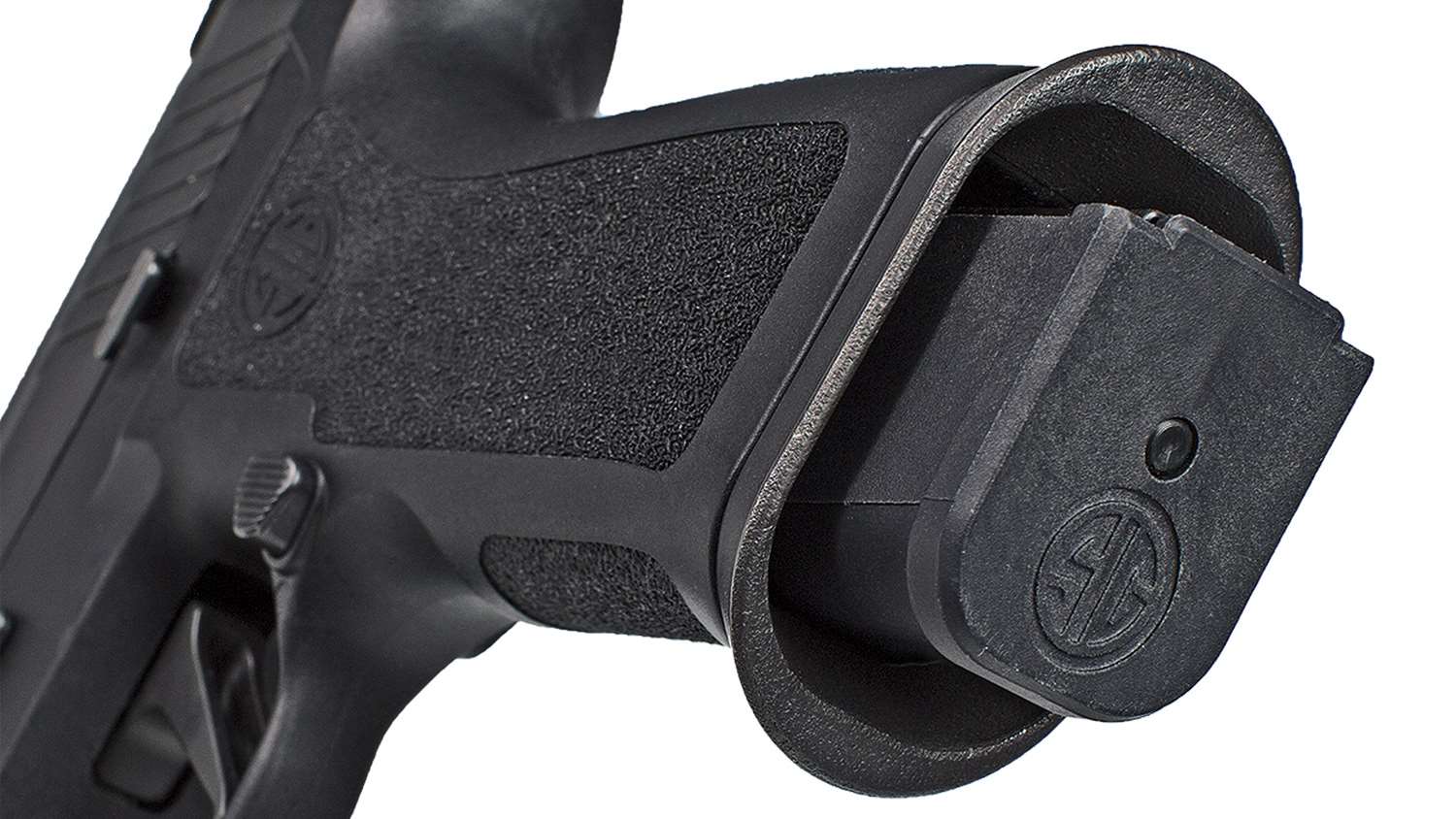
We both shot some repetitions of El Presidente. Jake shot the ubiquitous drill in 6.28 and 6.21 seconds, and I managed to do it in 6.42 and 6.40 seconds. As in previous drills, the reload was not an issue. The gun balanced well and pointed well in this situation, but neither of us were accustomed to the trigger. This field test was absolutely cold for Jake, and I was still not familiar with the gun, so mid-season form was not to be expected.
During this session there was one malfunction with the gun. We were shooting 115-, 124- and 147-grain American Eagle Ammunition from Federal Premium; some were the new Syntech coated bullets and some were copper-jacketed bullets. There was also some of my own handloaded cartridges in the mix. We had run all of the different loads over the chronograph. It is impossible to tell what load was the malfunction, but the round sounded light. The author is not very good at reloading 9mm rounds and one of his loads was the likely culprit of the malfunction, but that cannot be determined with any kind of scientific certainty.
During the range session we shot groups from a rest at 10, 25 and 50 yards with the X5. The results were not very impressive. The first set was shot from a makeshift rested position and the second set was shot from a much improved rested position, but neither set was anything that justified writing home to describe. I found the results of the group shooting troubling; was the problem the gun or was it the shooters with a mixed reputation on accuracy? More on this later.
More testing
Later in the week while shooting the gun indoors, I tried some groups at 25 yards just to become more familiar with the trigger and how it functions. Indoors the groups were better than outdoors, but I suspect that was due to getting more familiar with the gun and the trigger. Having always been slow to warm up and to adjust, the gun needed more of a chance to show what it was capable of doing. Perhaps it was not the gun that was lacking but the shooter; Jake has always told me that it is a gear problem not the shooter, but I am stubborn on the best days, so it may not be the gun. Things went better as I became more aware of how to approach the gun. Grim reality set in that it may not be the gun that was underperforming. (A number of people I have worked for in the past would be in agreement where the blame for the under-performance should be placed.)
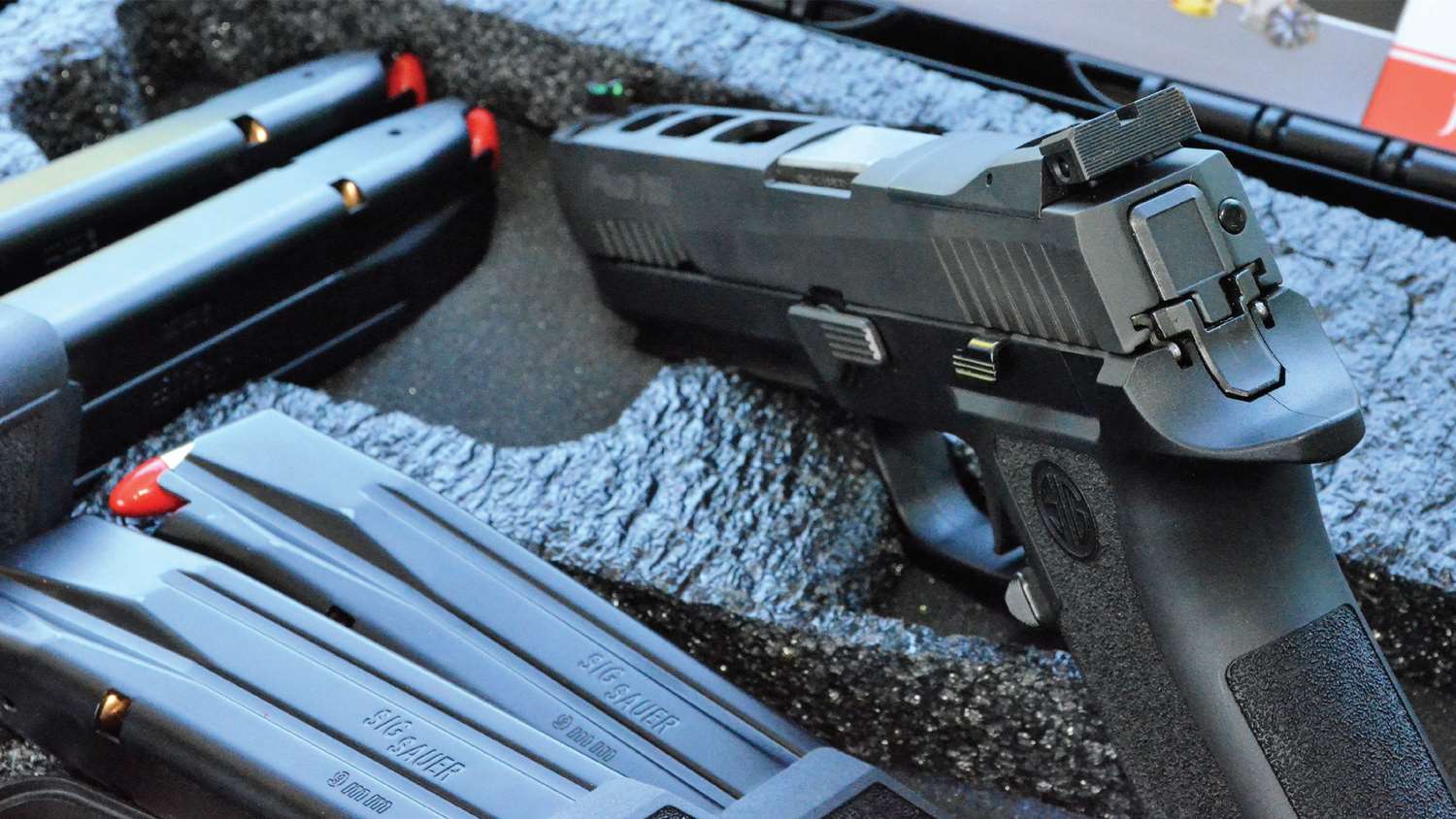
The next outing for the P320 X5 was the Steel Challenge match at the Riley Conservation Club. This match allows for three guns to be shot per competitor. I shot my normal Single Stack and Limited divisions, and I shot the X5 in GSSF (Glock Shooting Sports Foundation, a.k.a. Go Shoot Steel Fast). No holster is required for GSSF, and therefore GSSF was my lowest overall time. The goal of going one for one on the steel was my goal. Few make-up shots were needed, and the gun performed well in the crucible of competition. The American Eagle ammunition was used, once again without a single hiccup.
My questions about the gun’s inherent accuracy were answered. The Range Officer, Marvin Exline, himself a seasoned shooter, observed that the X5 did not have any trouble hitting plates reliably. Marvin’s observations are always a welcome confirmation.
During the setup for the SNS Indiana 400, I was able to break away for another range session with the P320 X5. I set up three targets at 10, 20 and 35 yards respectively, and made accuracy a focus rather than speed. I was able to deliver good times and hits on the paper targets no matter the range. I was using the same holster, and things were going much better; I shot several six-shot groups at 35 yards that resulted in all alphas, and one had five alphas and one Charlie. By the time about 500 rounds had been fired, the trigger felt much better and the results were also better. During the range session the holster wiggle was more noticeable than ever before; good gear, including the belt and the holster, is so important to a good performance. The yearning for a better rig was enlarged.
What difference might a good holster provide? Time will tell. As I had grown more familiar with the gun, the better it performed. Who takes a gun out of the box and goes to a match? This gun requires a short get-familiar period, but once familiar it will serve well in competition.
Conclusion
In the end, the X5 is a well-thought-out, solid-performing gun. If you are looking for a gun to compete with out of the box, this gun answers the bell. I have run into a couple of guys who have one, and the only thing that they had done was to have a trigger job done on it. Competition folks are going to do trigger jobs, no matter how good the trigger is out of the box. Call a trigger job in the competition world due diligence, but two or three range sessions will put you in the same place. Somewhere I had read that it is the archer, not the arrow, which counts. Jake says that is crazy talk and that the bow has something to do with the results. If you are in the market for a new gun for 3-gun, Production or Carry Optics, do yourself a favor and give the SIG Sauer P320 X5 serious consideration. The X5 is a well-designed and well-built gun that can be competitive right out of the box.
Article from the July/August 2017 issue of USPSA’s FrontSight magazine.















